May 28, 2020
Calling all Bees, Butterflies, and Hummingbirds
My neighbor’s native desert willow (Chilopsis linearis) is certainly an emissary for a drought-tough, airy-leaved small tree!
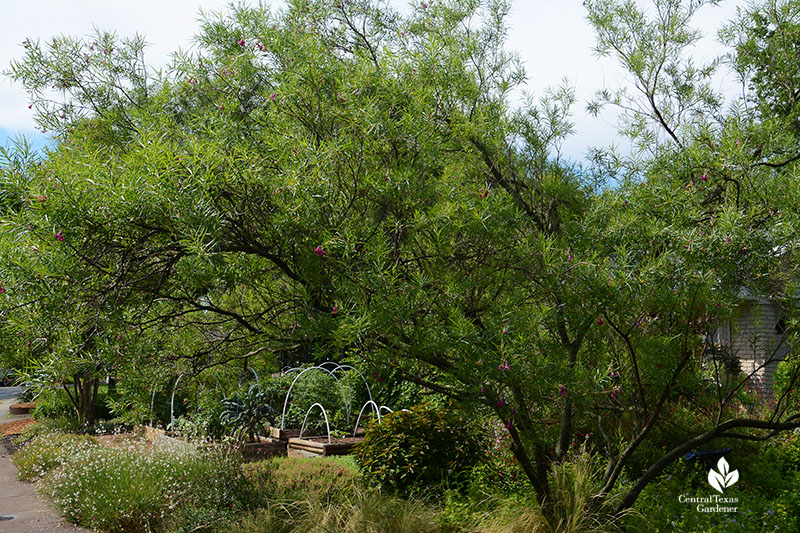
Enticing deep tubular bell-shaped flowers (color depends on variety) herald bees, butterflies and hummingbirds to these warm weather blossoms.
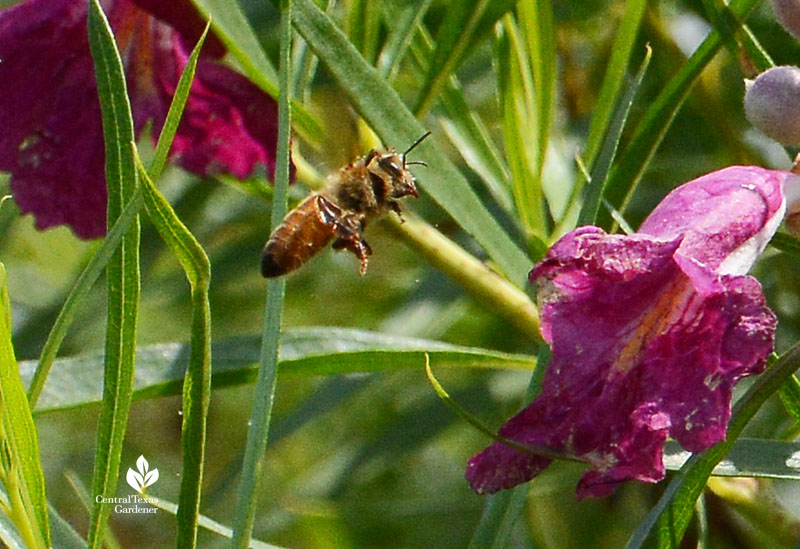
Nearby, wavy flags of Texas native Oenothera lindheimeri complement its vase shape.
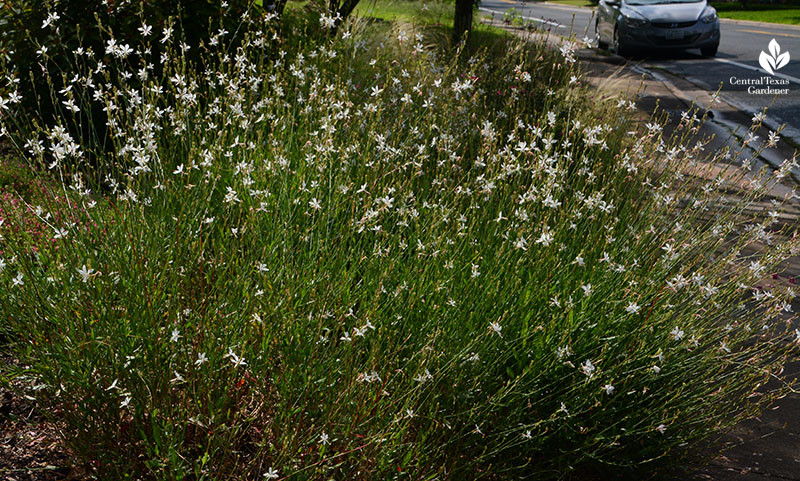
If you’re thinking Guara lindheimeri, it’s the same plant with a new botanical genus category. Whatever you call it, these 2-4’ tall perennials want sun, good drainage, and some moisture.
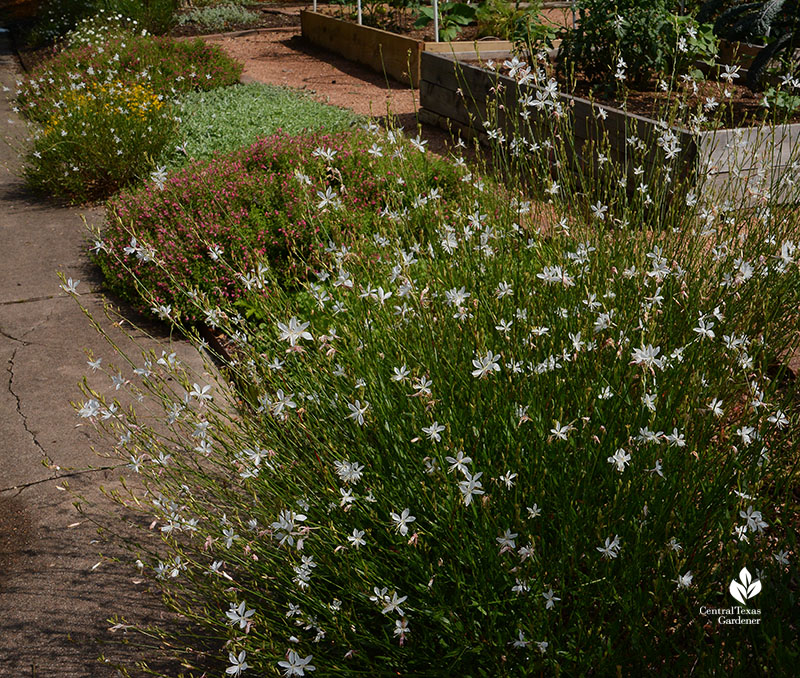
Moderately deer resistant, starry flowers attract bees, hawkmoths, and some butterflies. Since it easily hybridizes, growers love to introduce new varieties. Most commonly you’ll find ‘Siskiyou Pink’.
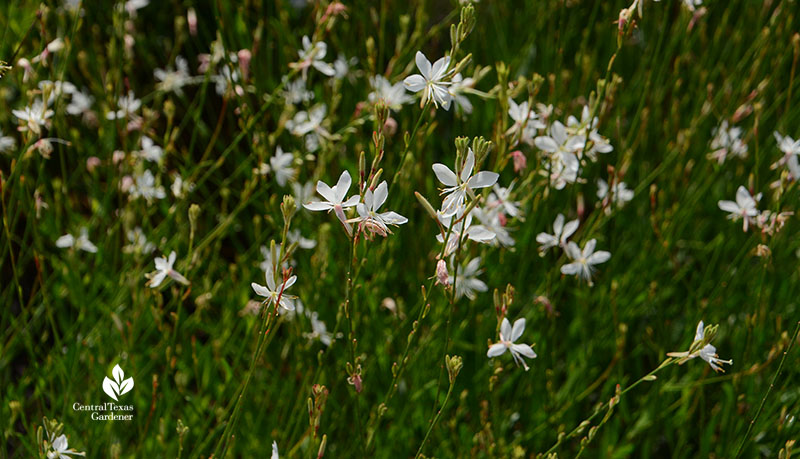
Back in my garden, Rio Grande Beebrush/Woolly Bee-Brush (Aloysia macrostachya) lives up to its name as a bee calling card to lavender flowers.
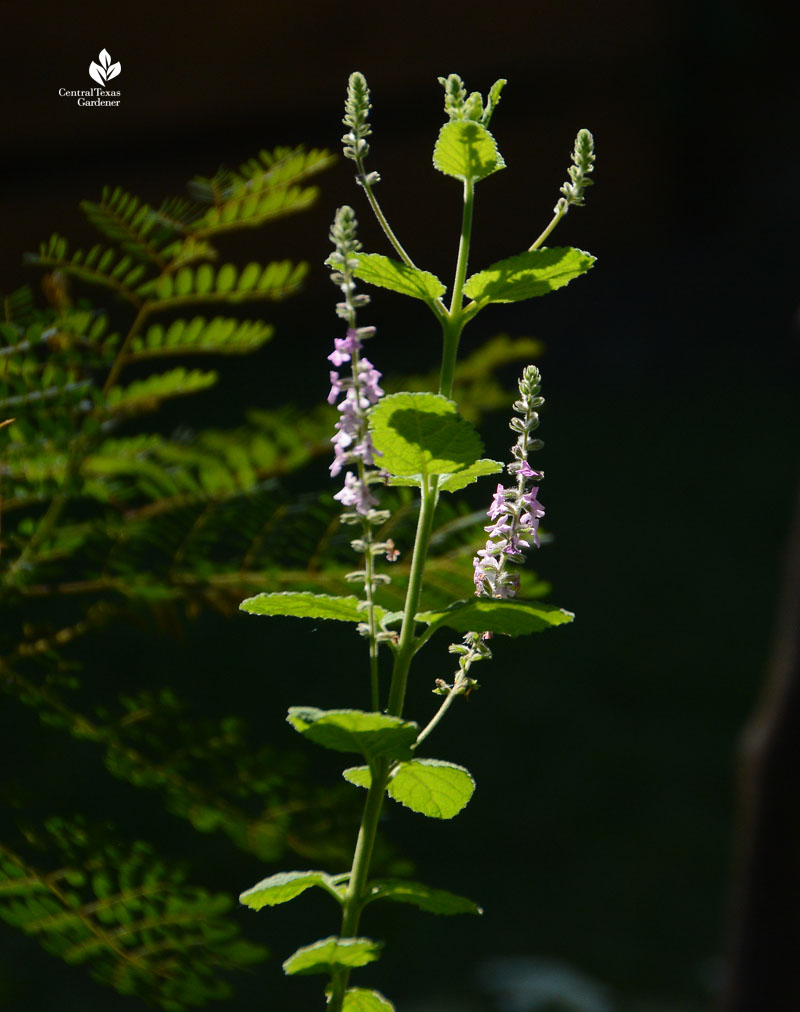
I got my two at Wright’s Nursery in Briggs from knowledgeable, diligent, and kind Barbara and Bobby Wright. Mine are still developing their shape to grow into perennial 6-12’ shrubs that can be pruned into tree shapes. Highly deer resistant.
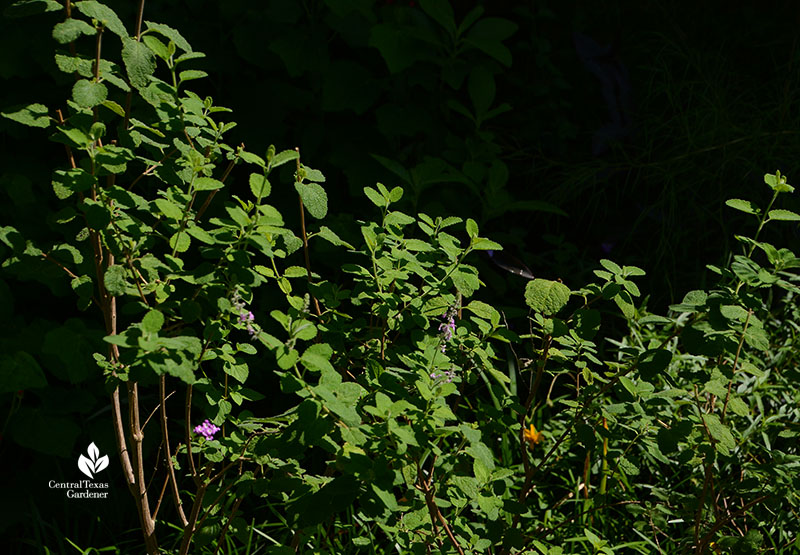
Watch Barbara’s CTG interview about native perennials for wildlife!
Nearby in this intense afternoon sun spot, Pride of Barbados (Caesalpinia pulcherrima) flaunts leaves that didn’t freeze back.
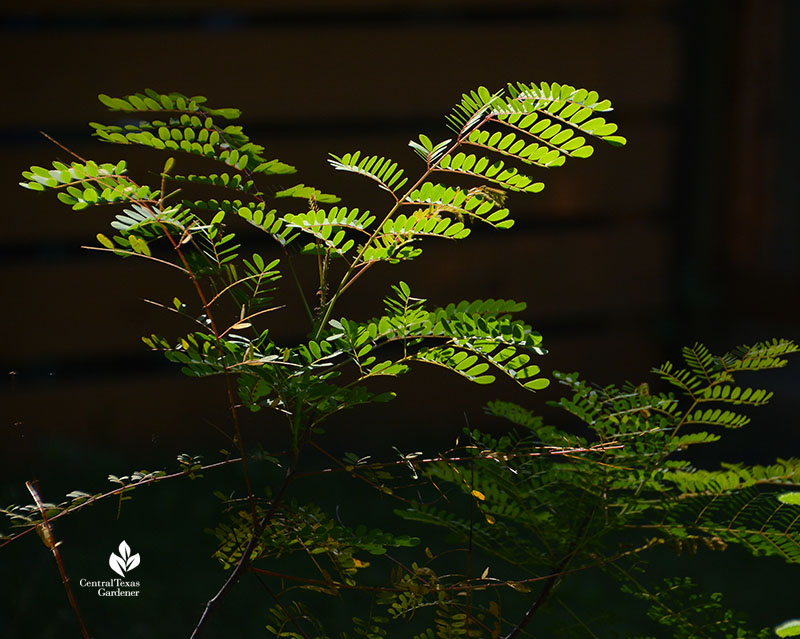
Let’s hope I get bee-loved flowers this year since I envy them all around town every summer.
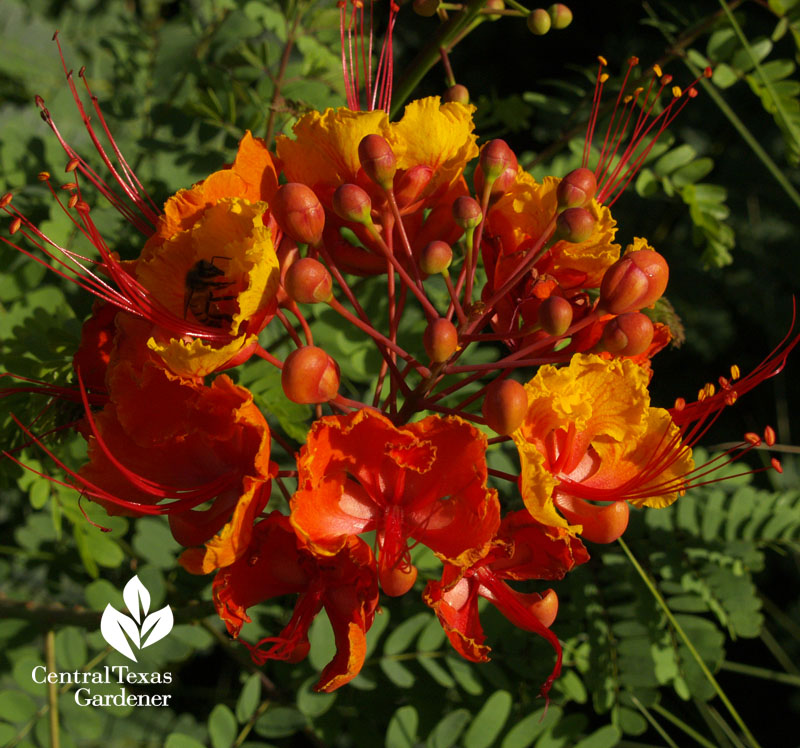
Firecracker fern (Russelia equisetiformis) is just as fiery with its tiny tubular flowers on long stems to attract butterflies and hummingbirds. Mine gets sun at various times in between shady breaks. I’ve also seen them in full sun. They didn’t freeze back this year, but I’ve lost yearlings in extended cold before.
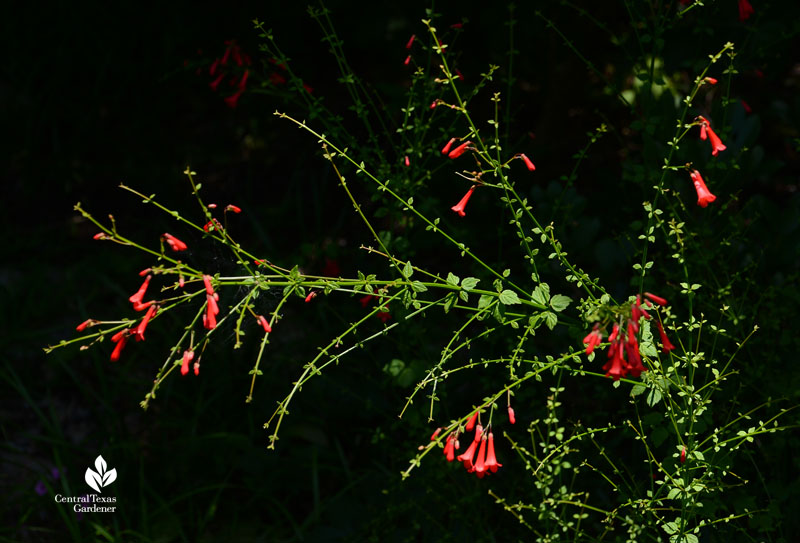
As Daphne told us on a past segment, young plants/stems have small, almost round leaves tucked in tightly along the thin green stems. As the plant matures, these leaves become insignificant, most of them dropping off, leaving the stem to conduct photosynthesis and feed the plant.
Hummingbirds and butterflies also stop by perennial Salvia microphylla ‘La Trinidad Pink’s tropical pink flower tubes.
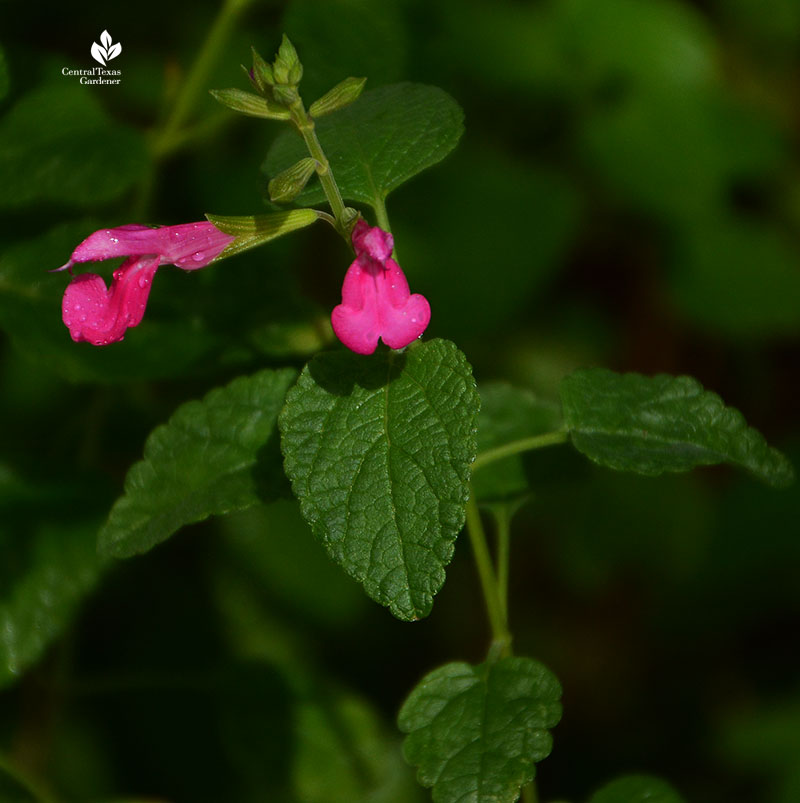
It needs occasional trimming to keep it lush. I do the major cut back in late February/early March, depending on weather. Mine only get morning and some afternoon sun, and could stand more.
It took a few years and some rainy seasons for ‘Big Momma’ turk’s cap to inch closer to its possible 6’ height in this dappled sun spot. This year it should hide that chain link fence quite well. Whether it freezes back or not, next January I’ll cut stems back for a quick spring rebound.
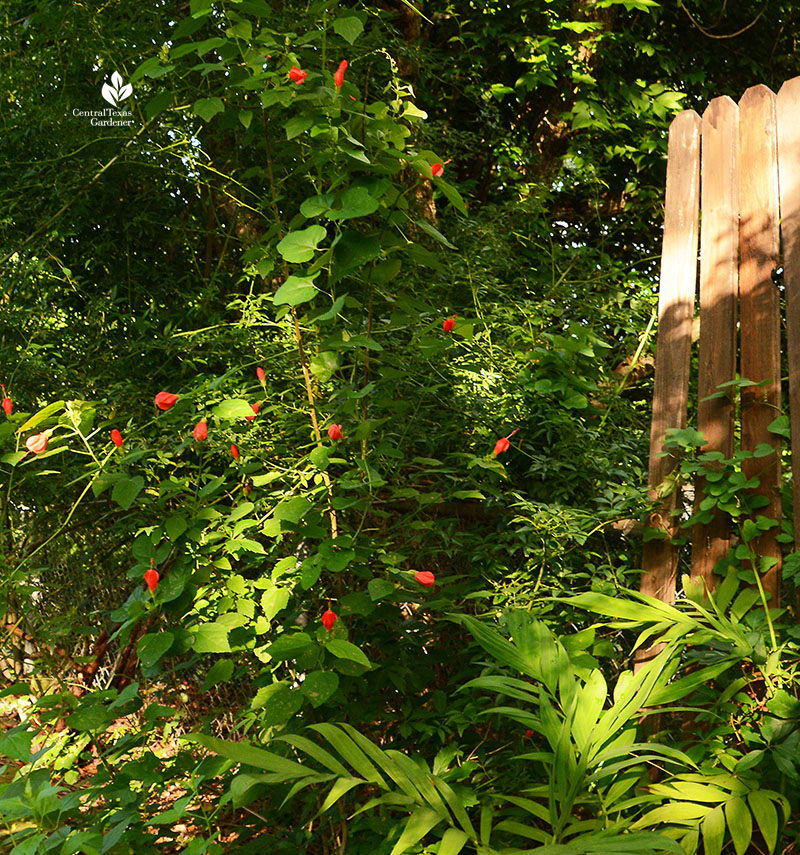
Witty and wise Greg Grant, horticulturist and Texas AgriLife Extension agent, cultivated this beauty as a cross between Malvaviscus drummondii and Malvaviscus arboreus and named it after his great grandmother. From late spring to frost, hummingbirds and butterflies head right for it.
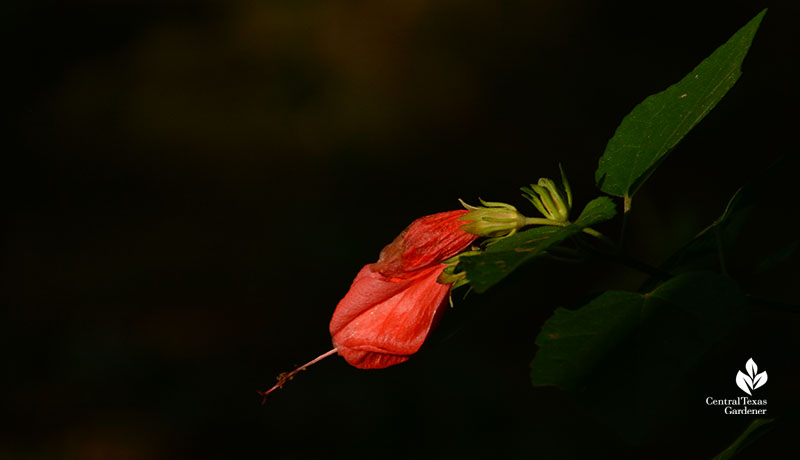
Watch our segment “Butterfly Plants for the Bees’ Needs!” with The National Butterfly Center’s Executive Director Marianna T. Wright and nursery manager Stephanie Lopez.
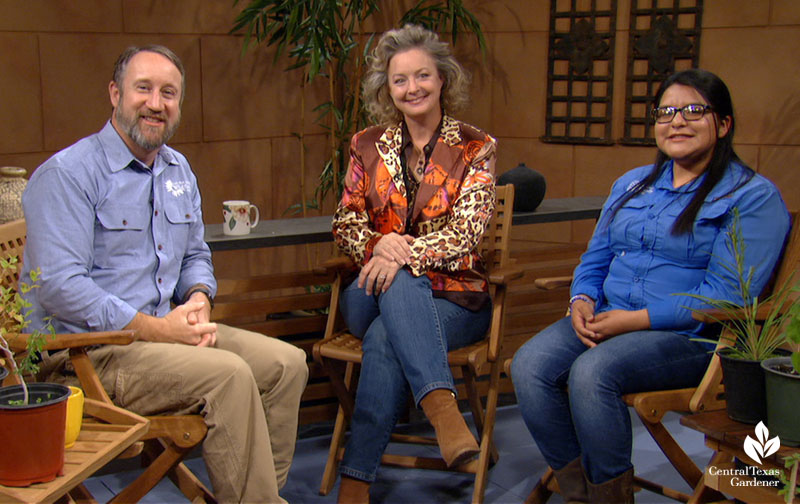
On tour in Leander, Betty Saenz turned a withered lawn into raised wicking beds and water-conserving plants that returned beneficial wildlife to closeup view.

And, see how a romantic patio in back transformed family gatherings.
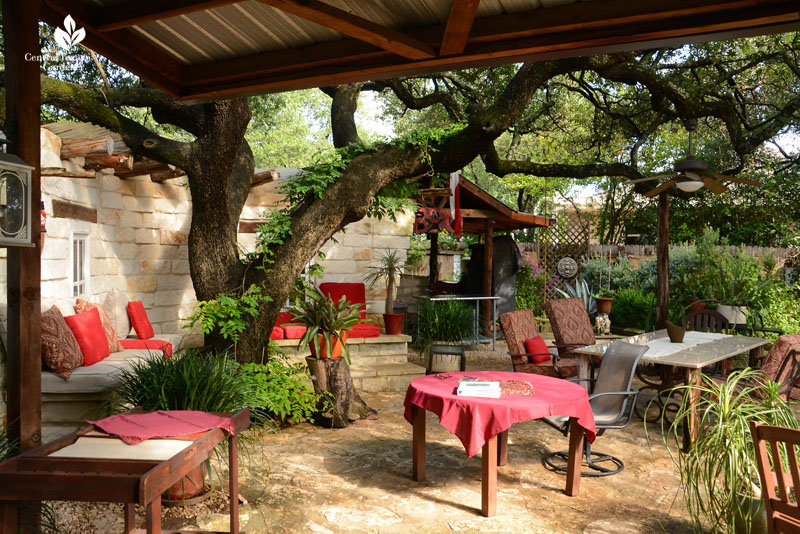
Thanks for stopping by! See you next week, Linda
tags:







